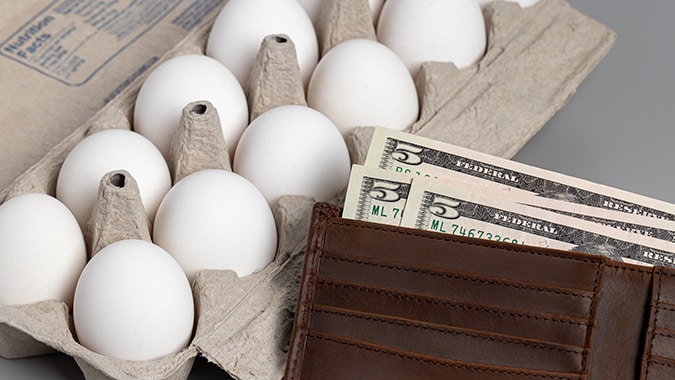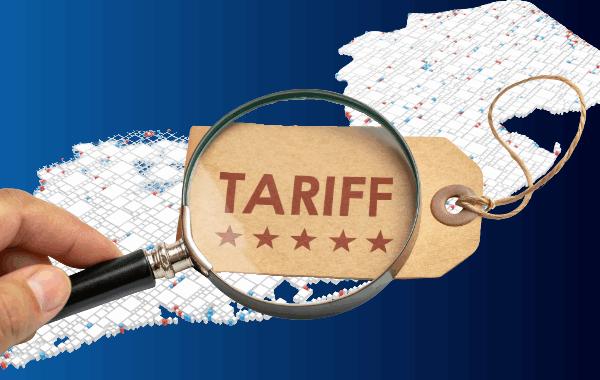Inflation accelerated in January more than economists had anticipated, rising a seasonally adjusted 0.5% for the month and pushing the annual inflation rate to 3%, the U.S. Bureau of Labor Statistics reported on Wednesday.
The index for shelter rose 0.4% in January, accounting for almost 30% of the monthly all-items increase. Rising gasoline prices (+1.8%) drove the overall energy index up 1.1% for the month. The index for food at home rose 0.5% in January with grocery store prices rising for dairy products, meats, poultry, fish, and especially eggs.
In fact, “egg-flation” returned with a vengeance in January, recording a 15.2% monthly price increase, the largest since 2015. The spike in egg prices, blamed on egg shortages caused by the deadly avian flu decimating poultry flocks, accounted for about two-thirds of the monthly increase in grocery store bills. Egg prices have soared 53% over 12 months.
The so-called core index that strips out more volatile food and energy costs, rose 0.4% in January, higher than the 0.2% monthly rise in December. Monthly cost increases were noted for motor vehicle insurance (+2.0%), used cars and trucks (+2.2%), airline fares (1.2%) and recreation (+1.0%). Conversely, the cost of clothing fell 1.4% over the month and indexes for personal care (-0.5%) and household furnishings (-0.2%) also declined.
Viewed on an annual basis, the 3.0% rise in the all-items index for the 12 months ending in January outpaced the 2.9% inflation rate recorded for the 12 months ending in December.
Inflation in the core index (excluding food and energy prices) increased 3.3% for the 12 months ending in January, outpacing the 2.3% rise for the 12-month period ending December.
The shelter index increased 4.4% on an annual basis, which is the smallest 12-month increase since January 2022. Core index items with notable increases over the last 12 months include motor vehicle insurance (+11.8%), medical care (+2.6%), education (+3.8%) and recreation (+1.6%).
Core inflation is closely watched by investors and members of the Federal Reserve because by excluding volatile food and energy prices, it provides a clearer view of inflation dynamics and the economy. The stock market fell after the CPI report was released on Wednesday morning, with investors interpreting the accelerating inflation as a disincentive for the Federal Reserve to lower interest rates anytime soon.




